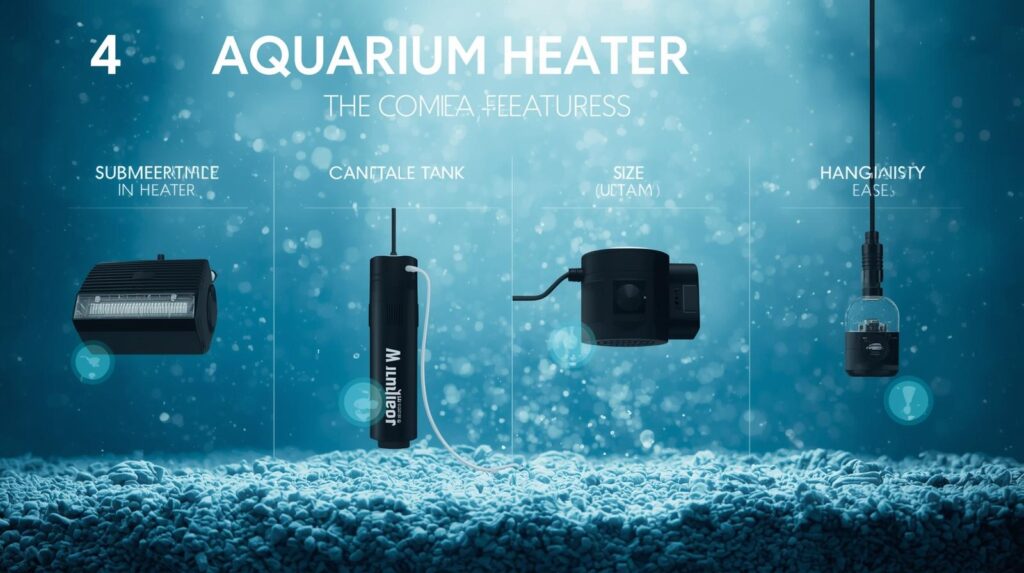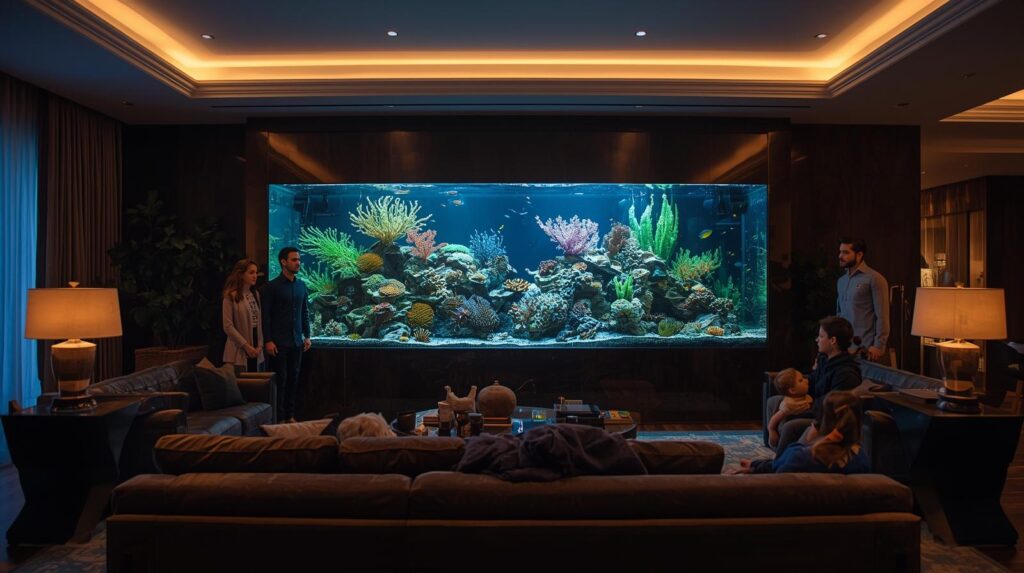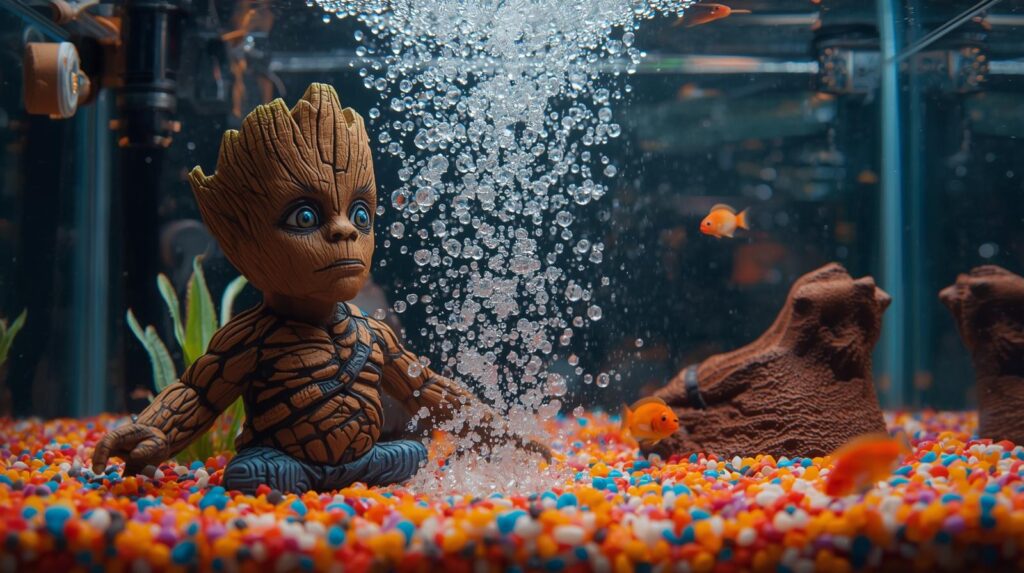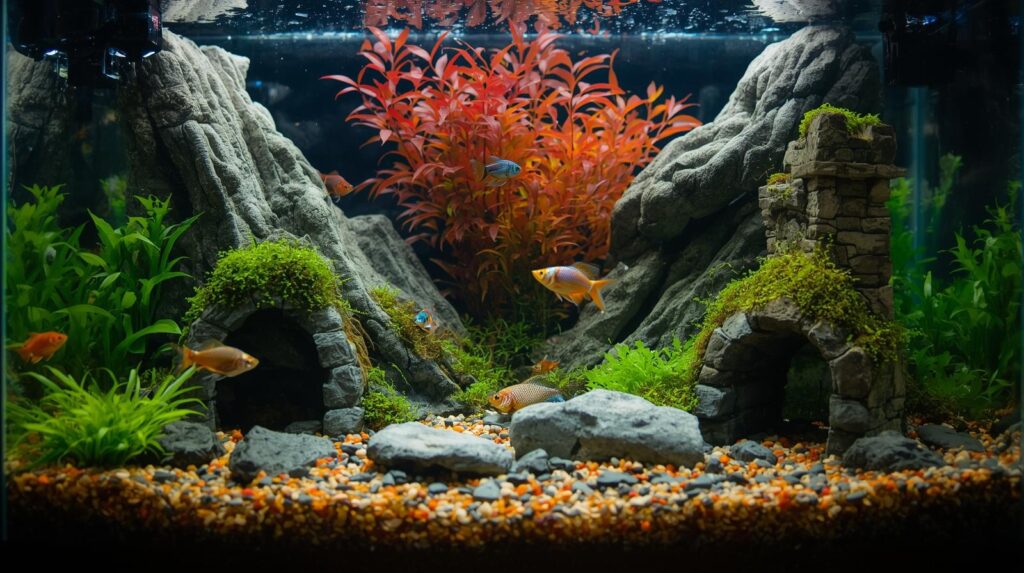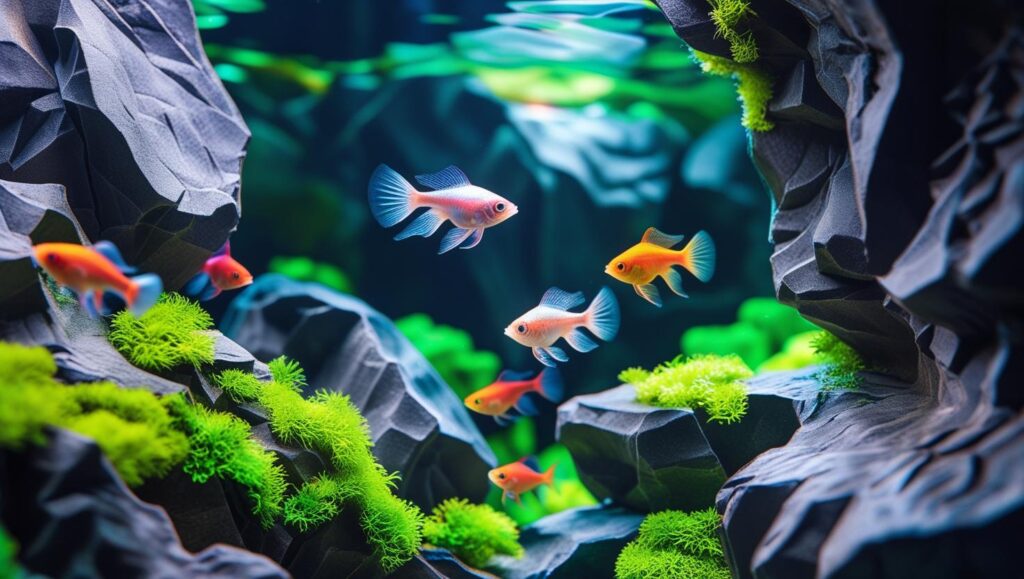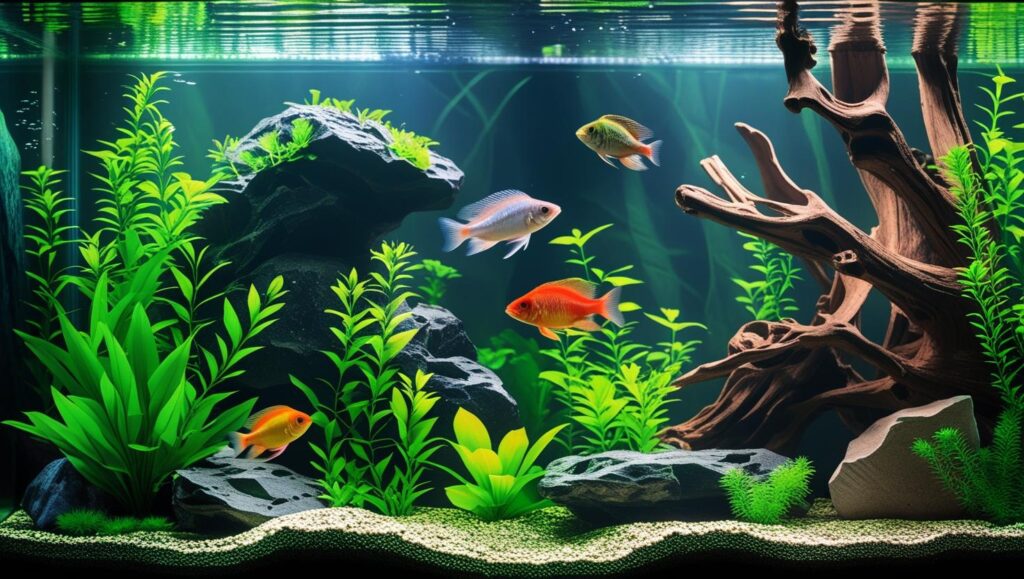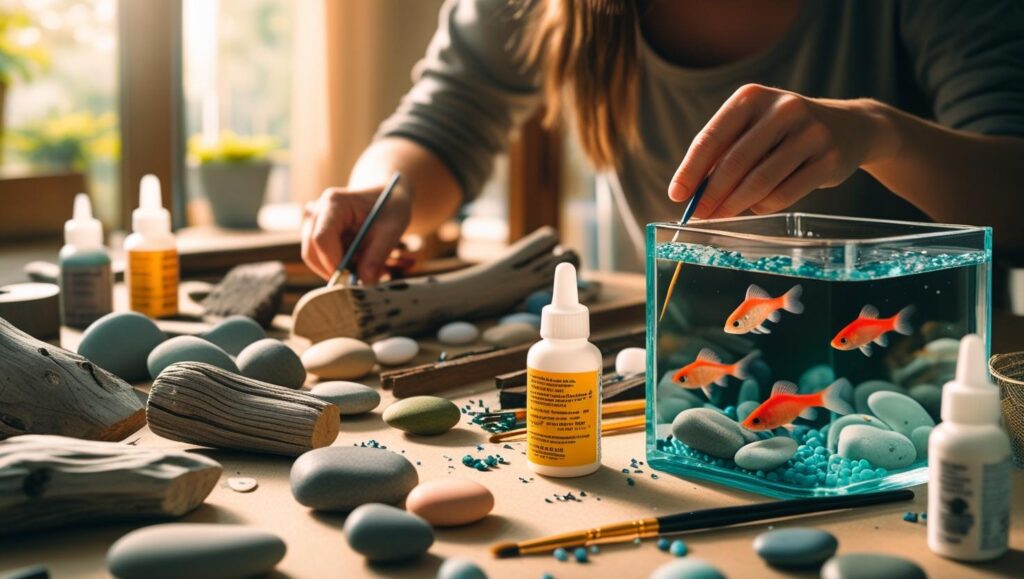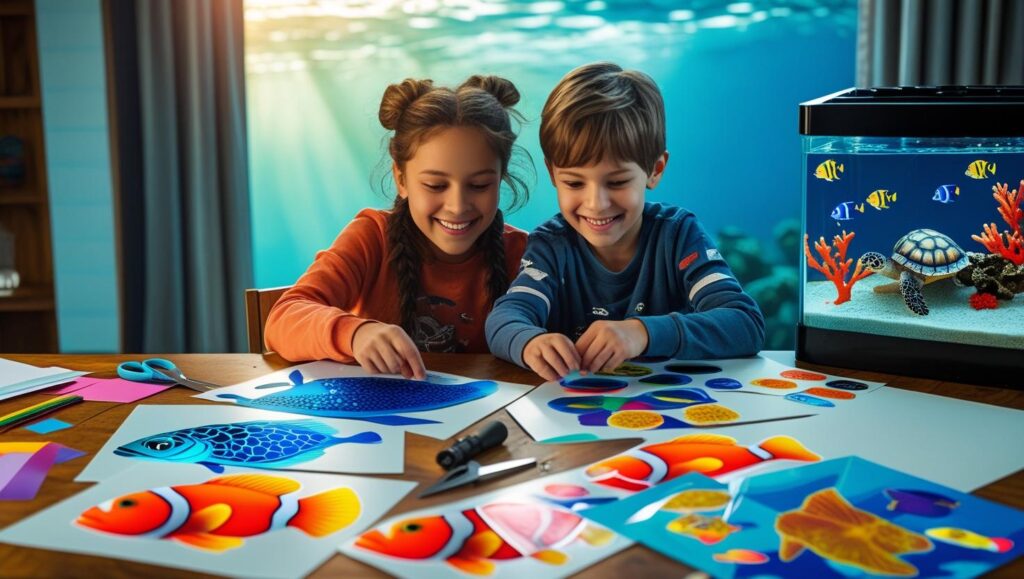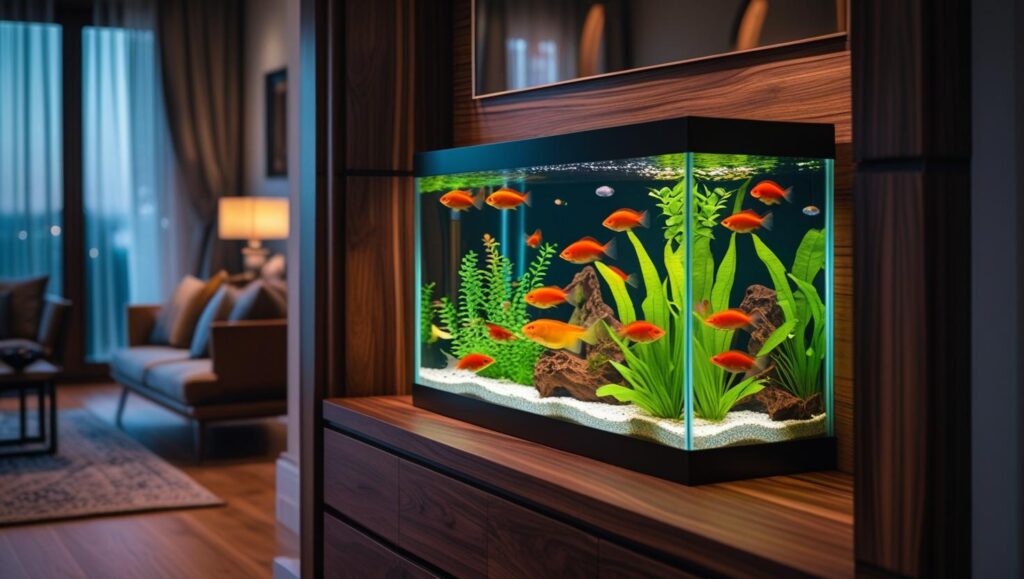Why Aquarium Backgrounds Matter for Your Fish

When you set up an aquarium, it’s easy to get lost in the excitement of choosing the perfect fish, filters, and plants. But have you ever thought about the background? That’s right! Aquarium backgrounds can transform the entire look of your tank, making it more visually appealing and offering a more natural environment for your fish. If you’re like me, you might have initially overlooked backgrounds, thinking they’re just a minor detail. But over time, I’ve learned just how much they matter—not just for aesthetics but for the well-being of your fish.
In this guide, we’re going to dive into the world of aquarium backgrounds. We’ll cover the different types, their benefits, and how to choose the right one for your setup. Whether you’re a seasoned aquarium hobbyist or just starting out, this article will help you make a well-informed decision about your tank’s background. So, let’s get started!
Why Your Fish Need a Background in Their Aquarium
You might be asking yourself, “Why should I bother with a background in my aquarium?” After all, it’s just a backdrop, right? But in reality, an aquarium background plays a much bigger role than you’d think. It’s not just about decoration or hiding the tank’s walls—it’s about creating a better environment for your fish and enhancing the overall experience.
Let’s explore why aquarium backgrounds matter so much for both the aesthetic and well-being of your aquatic pets.
1. Creating the Illusion of Depth and Space
One of the primary benefits of a well-chosen aquarium background is the sense of depth it creates. A background gives the tank dimension, making it appear larger than it is. Without a backdrop, your fish are swimming in a relatively flat, two-dimensional space. When you introduce a background with depth, such as a rock wall, coral reef, or underwater landscape, it transforms the tank into a more immersive, dynamic environment.
I’ve found that adding a background to my tank made it look so much more expansive. Even though the size of my tank hadn’t changed, the addition of a 3D rocky background made my tank appear like it was deep in the ocean, giving it a much more sophisticated and natural feel.
2. Improving Aesthetics and Personalizing Your Tank
Aquarium backgrounds aren’t just about making your tank look bigger—they also provide an opportunity to express your style. Whether you prefer a serene underwater garden, a bustling reef scene, or a dramatic rocky cliff, there’s a background out there that fits your vision. This personal touch adds character to your tank and creates a space that’s truly yours.
Choosing a background that complements your fish and tank decor enhances the overall aesthetic of the aquarium, making it feel more like a living art piece. When I first added a vibrant coral reef background to my tank, the colors really popped, and it made the fish look even more lively against the backdrop. It was a small change, but the difference was striking.
3. Providing a Safe Haven for Shy Fish
One of the most important functions of an aquarium background is providing security for your fish. Many species, especially those that are shy or territorial, thrive in environments where they have access to hiding spots. A background with caves, plants, or rock formations creates these much-needed refuges, giving fish a place to retreat when they feel threatened or stressed.
For example, I noticed that my bettas, who were initially skittish and would swim aimlessly when stressed, became much more relaxed once I added a rocky 3D background with hiding spots. They spent much more time swimming naturally instead of pacing nervously.
4. Reducing Stress for All Fish Species
Stress can be a major issue for fish, especially when they feel exposed or constantly threatened. Aquarium backgrounds help mitigate this stress by offering visual barriers that break up the “view” in the tank. For many species, this feels more natural, and they can retreat or hide whenever they need a break.
This is particularly important for species like angelfish or goldfish, who are sensitive to rapid movements and changes in their environment. Backgrounds provide them with peace and privacy, which in turn promotes healthier, more active fish.
5. Preventing Fish from Scratching Against the Glass
Fish, especially those with active swimming patterns, may sometimes scrape against the glass of the tank. This can happen if there’s nothing in the tank for them to interact with besides the glass, which leads to the uncomfortable behavior of bumping into it. A well-chosen background provides a more interesting and textured space for fish to interact with, preventing constant glass-bumping.
In my own tank, I saw a noticeable reduction in fish rubbing against the glass once I added a textured 3D background. The fish were more comfortable exploring the rocks and plants in the background rather than spending time near the glass.
What Are the Different Types of Aquarium Backgrounds?

When it comes to choosing a background for your fish tank, the options are virtually endless. But don’t let that overwhelm you. Let’s break them down into a few categories so you can find one that fits your style and your fish’s needs.
1. Printed Backgrounds
These are the most common and affordable types of aquarium backgrounds. They are essentially large sheets of durable paper or vinyl that feature printed images of landscapes like underwater scenes, rocks, corals, or even abstract patterns. These backgrounds are easy to install and offer an instant visual upgrade to your tank.
What I like about printed backgrounds is how customizable they are. You can choose something that perfectly matches the theme of your aquarium, whether you’re going for a marine reef look or a deep-sea exploration vibe. Plus, if you’re like me and you enjoy switching things up from time to time, printed backgrounds are fairly easy to replace.
2. 3D Backgrounds
If you want something more realistic, 3D aquarium backgrounds are the way to go. These backgrounds are made from materials like foam or plastic and have a textured design that mimics rocks, caves, or even coral reefs. They add a sense of depth to your tank, making it feel like your fish are swimming through a three-dimensional environment.
When I first set up my tank with a 3D background, I was blown away by the difference. It gave the tank a much more immersive feel, and my fish seemed more at ease with all the hiding spots. However, these backgrounds tend to be a bit pricier than printed ones, so they’re an investment if you want something long-lasting.
3. Live Plant Backgrounds
For a truly natural look, live plant backgrounds can be a great choice. These are usually made from aquatic plants that grow in the back of your tank, creating a lush green backdrop. Live plants improve water quality by absorbing nutrients and providing oxygen, so they’re not only beautiful but beneficial to your aquarium’s ecosystem.
However, live plants do require more maintenance, as they need light and regular care to thrive. But if you enjoy gardening or are willing to put in the extra effort, live plant backgrounds can create a stunning and healthy environment for your fish.
4. Painted or DIY Backgrounds
If you’re feeling creative, why not paint your own background? You can use aquarium-safe paints to create custom designs that reflect your personality or the type of environment you want for your fish. It could be anything from a simple gradient of colors to a detailed underwater scene.
I’ve personally tried this with some success, and while it can be a bit tricky to get the design just right, there’s something really rewarding about having a completely unique background for your aquarium.
What Benefits Can Aquarium Backgrounds Offer?
Beyond the obvious aesthetic appeal, aquarium backgrounds offer several practical benefits that can greatly enhance the health and well-being of your fish. Let’s take a closer look at some of these advantages.
1. Improved Fish Well-being
Many fish, especially shy or territorial species, feel more secure when they have a place to hide. Backgrounds that include rocks, caves, or plants provide safe hiding spots where fish can retreat if they feel stressed. I’ve noticed that my fish are much less skittish when they have plenty of space to hide behind plants or textured backgrounds. It seems like a simple thing, but it can really make a difference in how your fish behave.
2. Visual Depth and Space
One of the best things about aquarium backgrounds is how they create the illusion of depth in your tank. By having a design that recedes into the distance, such as a backdrop of rocks or a planted forest, it makes the tank feel bigger than it actually is. This can be particularly helpful if you have a smaller tank and want to avoid the feeling of it being cramped.
3. Prevents Fish from Scratching the Glass
Fish can sometimes get a little too curious and scrape against the glass, especially if the background is too stark or empty. Backgrounds with textures or colors give them something to interact with other than the tank’s walls, which can help keep them from bumping into the glass too much. Plus, if you have an algae problem (it happens to the best of us), some backgrounds can make it less noticeable, giving your tank a cleaner, more polished appearance.
4. Increased Privacy for Fish
Aquarium backgrounds can also provide privacy for your fish. Some species are naturally more territorial, and the presence of a solid background can help reduce conflicts with other fish. Having an area where one fish can hang out without constantly being challenged by others helps maintain peace in the tank. I’ve found that my bettas especially seem to appreciate having a calm, private space at the back of the tank.
What Should You Consider When Buying an Aquarium Background?

Choosing the right background for your aquarium is a big decision, and there are a few factors you should keep in mind before making a purchase. Here are some key points to think about:
1. Tank Size and Shape
Not all backgrounds will fit every tank. Make sure you measure your tank’s dimensions and consider the shape when selecting a background. Some backgrounds are sold in standard sizes, while others can be cut to fit, which offers more flexibility.
2. Fish Compatibility
Consider the type of fish you have and their behavior. If you have particularly shy or aggressive fish, a background with more hiding spots (like rocks or plants) might be beneficial. If your fish are more social, a simple, open background might be enough.
3. Maintenance and Durability
Think about how much maintenance you’re willing to do. Live plant backgrounds are beautiful but require regular care. 3D backgrounds, while stunning, can be more challenging to clean. Printed backgrounds are easier to replace but might need to be changed more frequently. Make sure you choose a background that matches your level of commitment.
4. Aesthetic Preferences
Finally, think about the look you want to achieve. Do you prefer a more natural, earthy look, or are you going for something more whimsical or artistic? Whatever you choose, remember that the background should complement the rest of your aquarium setup.
How Can You Install Aquarium Backgrounds?
Once you’ve chosen your background, the next step is installation. Depending on the type of background you’ve chosen, the installation process will vary. Here are the basic steps for some of the most common types:
1. For Printed Backgrounds
Printed backgrounds are easy to install. Simply measure the back of your tank, cut the background to size (if necessary), and use aquarium-safe adhesive to stick it to the glass. Some printed backgrounds come with adhesive on the back, making installation even easier.
2. For 3D Backgrounds
3D backgrounds are a bit more involved to install. These may require you to attach them to the inside of the tank using silicone sealant. You might need to remove decorations or plants temporarily while you install the 3D background. Be sure to follow the manufacturer’s instructions for proper installation.
3. For Live Plant Backgrounds
Installing a live plant background requires a bit more effort. You’ll need to plant aquatic plants in the substrate at the back of your tank. Ensure that your lighting is appropriate for plant growth and that the plants are positioned securely so they won’t float to the surface. Regular maintenance, like trimming and cleaning, will also be required.
4. For DIY or Painted Backgrounds
If you’re creating your own background, make sure the materials you’re using are safe for aquarium environments. If you’re painting, make sure to use aquarium-safe paints and sealants. Install the background by adhering it to the outside of your tank or painting directly on the back wall.
Table: Comparison of Aquarium Background Types
| Background Type | Benefits | Maintenance Level | Cost Range | Ideal For |
|---|---|---|---|---|
| Printed Background | Affordable, easy to install, customizable | Low | Low | Beginner aquarists, budget-friendly |
| 3D Background | Realistic, creates depth and hiding spots | Medium | Medium-High | Aquarists with larger tanks, realistic themes |
| Live Plant Background | Natural, improves water quality, oxygenates | High | High | Aquarists who enjoy gardening and plant care |
| Painted DIY Background | Unique, customizable | Medium-High | Medium | Creative aquarists, those who want a unique design |
Can Aquarium Backgrounds Really Improve Your Fish’s Quality of Life?
The short answer is yes. A well-chosen background can significantly impact your fish’s health and happiness. Fish thrive in environments where they feel secure, and a background that provides hiding spots and visual depth helps replicate a more natural habitat. Without this, they might feel exposed or stressed, which could affect their behavior and overall well-being.
I’ve seen this firsthand. When I first set up my aquarium, I chose a simple background, but after adding more natural hiding spots and a 3D background, I noticed that my fish seemed to behave more naturally. They were less skittish, more active, and seemed to enjoy their space much more. It really made a difference, and it was one of the simplest changes I made that had the biggest impact on my tank.
Choosing the right background for your aquarium can be a fun and rewarding process. It not only enhances the visual appeal of your tank but also contributes to the health and comfort of your fish. Whether you choose a simple printed background, a realistic 3D design, or a living plant backdrop, the options are endless, and each has its own set of benefits.
Looking back, I didn’t fully appreciate the importance of backgrounds when I first started setting up aquariums, but now I see just how much of a difference they make. They’re more than just decoration—they create a more balanced environment for both the fish and the person admiring the tank. So, take your time and choose a background that works best for you and your aquatic friends.
FAQ: Aquarium Backgrounds for Your Fish Tank
1. What is the purpose of having a background in an aquarium?
Aquarium backgrounds enhance aesthetics, create depth, and provide hiding spots for fish, reducing stress and improving their well-being by making them feel secure and more comfortable.
2. What are the different types of aquarium backgrounds?
The types include printed backgrounds (affordable, easy to install), 3D backgrounds (realistic depth), live plant backgrounds (natural and oxygenating), and DIY painted backgrounds (customizable).
3. How do aquarium backgrounds benefit my fish?
Backgrounds provide hiding spots, reduce stress, and give fish a more natural environment. They also prevent scratching on the glass and create a sense of privacy and security for shy species.
4. How do I choose the right aquarium background for my tank?
Consider tank size, fish behavior, and aesthetic preferences. Larger tanks may benefit from 3D backgrounds, while smaller tanks work well with printed designs or live plants for a natural look.
5. How do I install a printed aquarium background?
Measure your tank, cut the background to size, and apply it with aquarium-safe adhesive. Some printed backgrounds have adhesive backing, making installation even easier without air bubbles.
6. Are 3D backgrounds harder to install than printed ones?
Yes, 3D backgrounds require more effort and silicone sealant for installation. They are heavier, requiring secure attachment, and may involve temporarily removing tank decorations for proper fitting.
7. Can I use any type of paint for a DIY aquarium background?
No, only use aquarium-safe paints. Regular paints can harm fish by leaching toxins into the water. Choose non-toxic, waterproof paints specifically designed for aquarium environments for safety.
8. How often should I replace or maintain my aquarium background?
Maintenance depends on the type. Printed backgrounds may need replacing after months due to algae buildup. 3D backgrounds require occasional cleaning, while live plant backgrounds need regular trimming.

